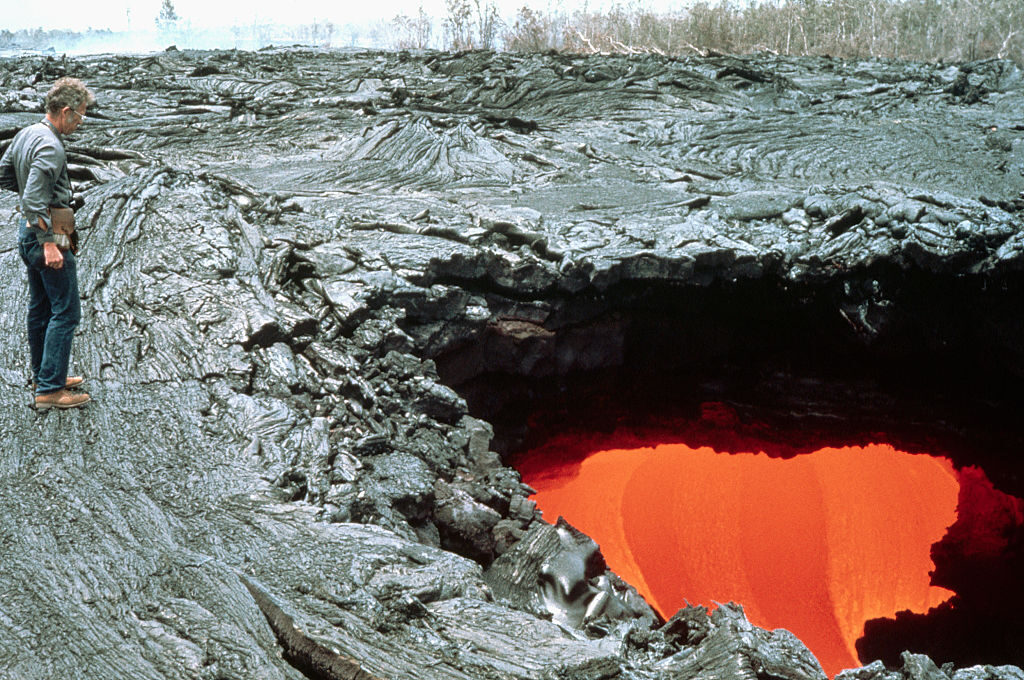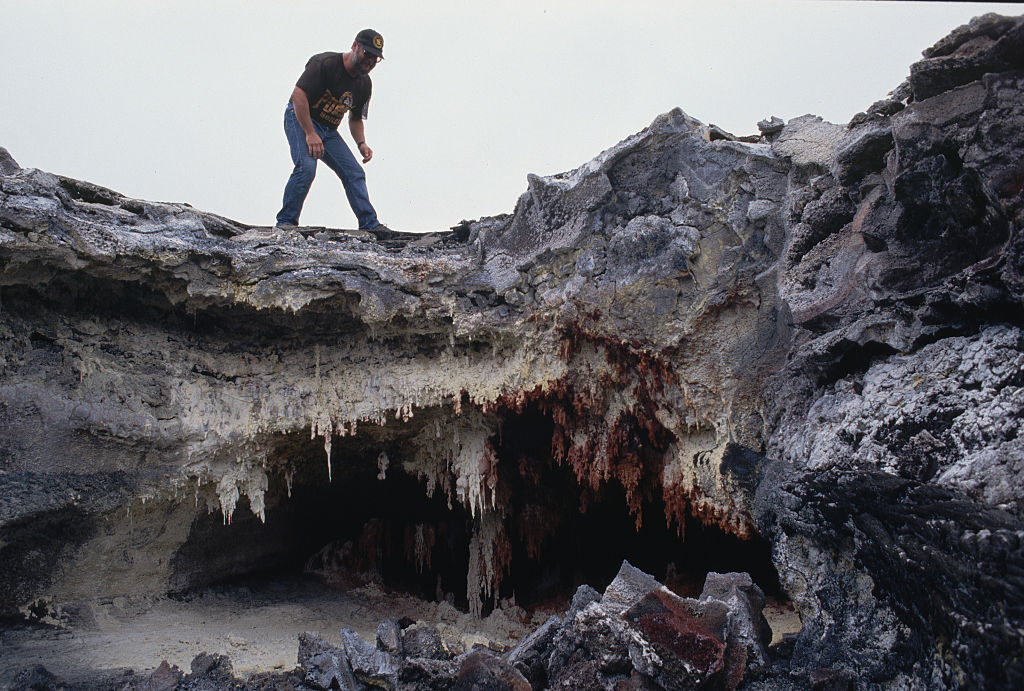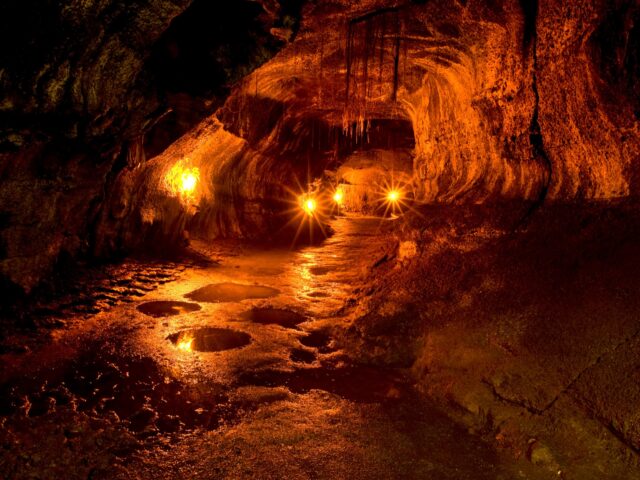Volcanic environments in Hawaii are apparently full of mysterious microbes, a study reveals.
According to scientists, the island’s structures that were created by volcanic activity hold uncharacterized communities of bacteria, Gizmodo.com reported Thursday.
University researchers and others with NASA studied samples from 70 areas on the Big Island, including caves, tubes, and fumaroles, otherwise known as vents that release volcanic gas and water.
“They analyzed and sequenced the RNA found in the samples, allowing them to create a rough map of the bacterial communities living there,” the Gizmodo report said.
The researchers’ article was published Thursday in Frontiers and Microbiology and titled, “Islands Within Islands: Bacterial Phylogenic Structure and Consortia in Hawaiian Lava Caves and Fumaroles.”

D.W. Peterson stands next to the skylight of a lava tube near Mauna Ulu Crater. Location: Kilauea Volcano East Rift, Hawaii Volcanoes National Park, Hawaii, USA. (Photo by © CORBIS/Corbis via Getty Images)
“Our data illustrate that lava caves and geothermal sites harbor unique microbial communities, with very little overlap between caves or sites,” the article read.
Some of the areas studied were among the most inhospitable places on the planet, due to their high temperatures and toxic chemicals.
Therefore, researchers did not expect to find many varieties of life at those sites, the Gizmodo report continued:
Older caves and tubes that were formed over 500 years ago, the researchers found, did have greater bacterial diversity. But to their surprise, even the active geothermal vents were filled with a wide variety of bacteria. And compared to the other sites, the bacterial communities in these harsher habitats also appeared to be more complex in how they interacted with one another.
In addition, the bacteria samples found at those particular sites “rarely overlapped, meaning that these environments seem to host their own unique microbial worlds, with at least thousands of unknown species left to be identified,” the outlet said.
Meanwhile, the scientists explained it would take more research to get answers to the volcanic findings.

A man looks down into an opening of a dead lava tube. Although lava doesn’t flow through it anymore, hot gases are still emitted from the tube along the flanks of Kilauea. (Photo by Roger Ressmeyer/Corbis/VCG via Getty Images)
Hawaii’s islands are located at the southeast end of a string of volcanoes, according to the U.S. Geological Survey website.
“Each island is made of one or more volcanoes, which first erupted on the floor of the Pacific Ocean and emerged above sea level only after countless eruptions. Presently, there are six active volcanoes in Hawaii,” the site read.

COMMENTS
Please let us know if you're having issues with commenting.